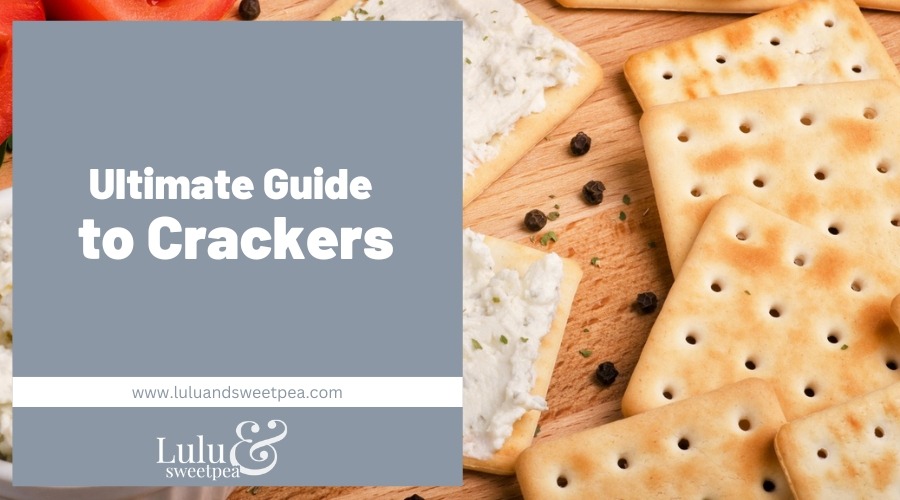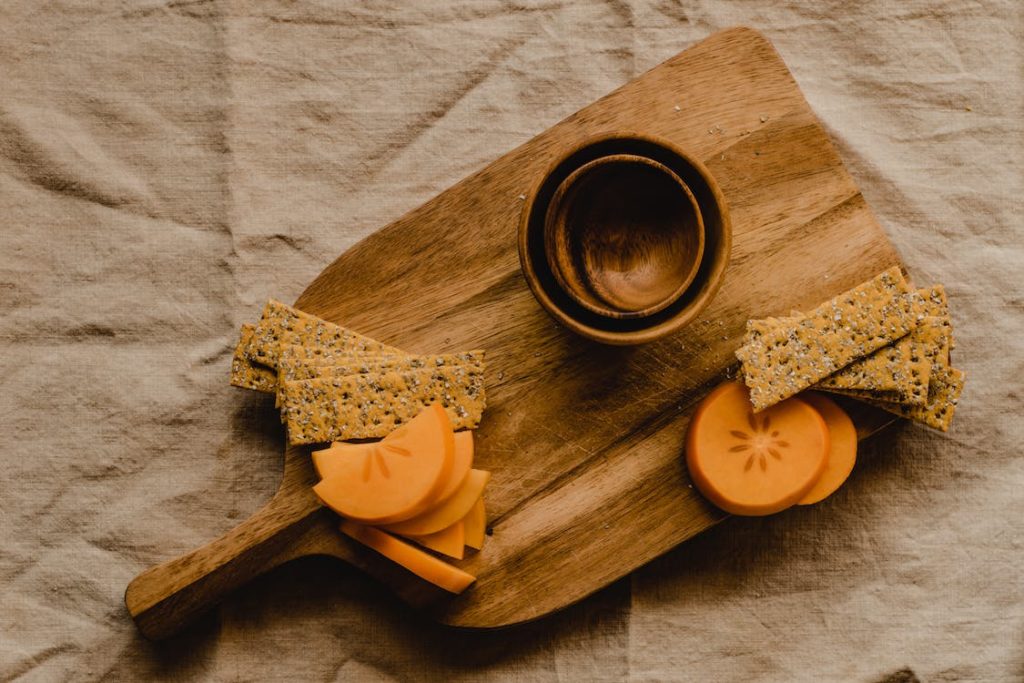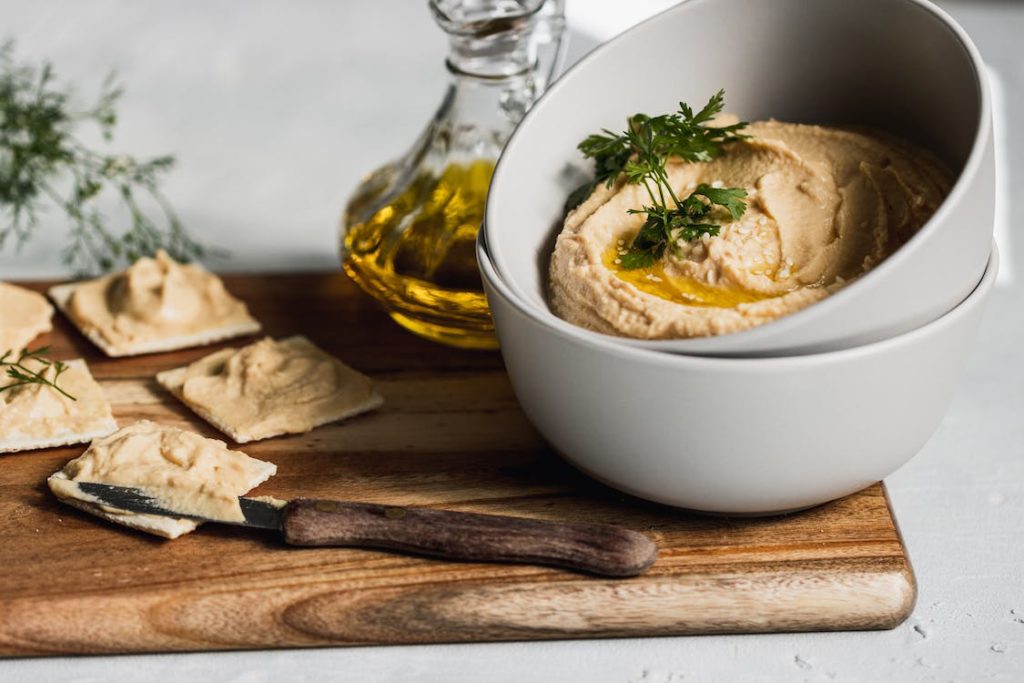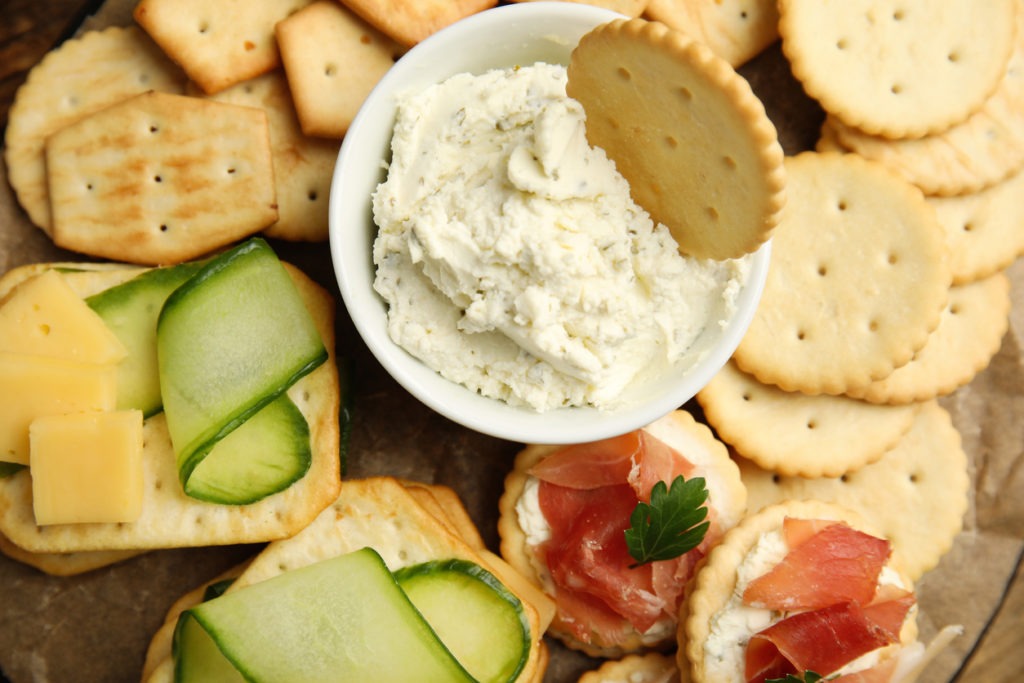Crackers have extremely minimal quantities of fat and sugar. The modern snack cracker, with its delectable coatings and flavors, can be consumed without modifications. Crackers can be further separated into fermented varieties, such as soda crackers, saltines, and cream crackers, and chemically leavened varieties, such as the famous snack cracker.
Varieties of Crackers
Cream crackers
Popular fermented crackers enjoyed in the United Kingdom are cream crackers. Cream crackers are notably different from saltine crackers in terms of size, look, flavor, and feel. Cream crackers can be produced using either a sponge and dough process or a single-stage method. The sponge and dough procedure used to manufacture cream crackers is comparable to that used to make saltine crackers, however the formula is significantly different.
Cream crackers is a traditional moniker that does not imply that cream or even milk is currently included in the recipe. Flour, butter, and salt make up the simple, unsweetened base recipe for cream crackers. Always fermented with yeast, the dough is laminated before being sliced and baked. The combination of flour protein alteration, which occurs during fermentation, and lamination results in biscuits that are characteristically flaky and blistered in diverse ways.
Soda crackers
These crackers are commonly known as saltines or premium crackers in the United States. They are typically produced and consumed in nations that do not have cream crackers. The crackers are typically square but significantly smaller than cream crackers. Soda crackers are created using the sponge and dough method, and a substantial amount of sodium bicarbonate is added to the dough, giving them a higher pH than cream crackers, hence the name. As for cream crackers, there has been some confusion in the nomenclature of soda crackers, and some “soda crackers” are leavened with ammonium bicarbonate and coated with oil like savory crackers.
Are Crackers an Appropriate Snack?
Well, crackers are not as nutritious as you may believe. Crackers are a pleasant and convenient snack. They are therefore adored by both youngsters and adults. Since crackers are tasty snacks, you should make them as nutritious as possible.
But crackers are unhealthy due to their high sodium and calorie content. In addition, they lack the vital ingredients that make meals healthy.
White flour, coarse salt, shortening, and yeast or baking soda are used to make crackers. These components render crackers crisp, dry, and with prominent holes. Consequently, they are snappy and engaging.
The crackers are touted as a nutritious, simple, on-the-go snack made from cereal grain and staple food. However, this assertion is not necessarily true. Additionally, whole grain crispbreads are being manufactured as crackers.
When consumed with butter, nuts, and jam jelly, they become quite appetizing treats. And they are indispensable as a midnight snack.
Nonetheless, it is essential to examine the nutritional profiles of these crackers.
How to Select a Healthier Cracker?
Consider the amount of fiber in your cracker to increase your daily fiber intake. After a meal, consuming fiber makes you feel fuller and more pleased. People who consume more fiber are likely to consume less calories in the hours after a meal or snack.
Below the Nutrition Facts label, search for “whole grain” as one of the first ingredients on crackers that have extra fiber. Triscuit crackers are composed of whole grains. Or Wasa Fiber Whole Grain Crisp Bread contains 60 calories, 1 gram of fat, 14 grams of carbohydrates, 5 grams of fiber, and 3 grams of protein per serving.
Consider purchasing crackers that contain veggies, whole grain flours, nuts, and seeds. Some new varieties of crackers are rich in fiber, healthy fats, and protein.
For instance, you can now get crackers with root vegetables like cassava or cruciferous vegetables like kale and cauliflower as the primary ingredients. If you choose to consume fewer carbohydrates, Parmesan crisps and avocado-based crackers are excellent options.
Consider the serving size and sodium levels before consuming.
Guide to Purchasing Crackers
- Opt for items such as healthy oils (olive, canola) and whole grains (whole wheat, brown rice, whole rye).
- Avoid partially hydrogenated oils, cottonseed oil, palm oil, and sugar.
- Examine Your Oil: Some crackers include partially hydrogenated oils despite containing zero grams of trans fat. Check the ingredient list and choose oils that are heart-healthy instead.
- Explore further and seek out additional whole grains: Crackers are now prepared using quinoa, brown rice, whole rye, amaranth, and other healthful whole grains in addition to whole wheat.
- Beware of the flavor upgrade: The sodium content of flavored crackers can exceed 300 mg per serving, and that’s before adding salty toppings like dips and cheese.
- When selecting a snack cracker, check for the following numbers: (based on a serving size of about 30 grams)
Benefits of Crackers to Health
Dietary Fiber
If you consume crackers prepared with 100 percent whole grain flour, you will increase your fiber intake. The Linus Pauling Institute argues that foods high in fiber are welcome additions to weight loss regimens since fiber helps you feel full after a meal and a low fiber intake associated with an increased risk of obesity. A diet rich in fiber protects against chronic diseases, such as type 2 diabetes and cardiovascular disease. According to the Institute of Medicine, a 1-ounce serving of whole-wheat crackers provides roughly 12 percent of the daily fiber requirements for women and 8 percent for men.
Protein
Crackers and cheese give protein, an essential component for maintaining healthy tissue. Your bones, skin, and hair all contain protein and require appropriate protein from your diet in order to remain strong and damage-resistant. Protein is an excellent supplement to a weight loss diet. According to the United Nations University, your body spends nearly 10 times as many calories digesting protein as it does burning fat and more than four times as many calories as it does burning carbohydrates. A serving of crackers and Cheddar or Gouda cheese has 10 grams of protein (1 ounce of whole-wheat crackers and 1 ounce of cheese).
Calcium
Cheese contains calcium, so nibbling on crackers and cheese helps you meet your daily calcium requirements, which is advantageous for dieters. A snack of crackers and Cheddar cheese includes 214 milligrams of calcium, or 21 percent of the Institute of Medicine’s recommended daily allowance. A serving of crackers with Gouda cheese provides 208 milligrams of calcium. Calcium-rich diets promote fat reduction, according to WebMD, and high calcium intake is associated with a reduced risk of obesity. Calcium has health benefits as well. Small amounts of calcium are required for the proper operation of your nerves, muscles, and heart, and consuming adequate calcium helps you create and maintain strong bones.
A few parting thoughts
When consuming crackers as a snack, place them on a plate with your preferred healthy topping and consume a single portion. Chew the crackers gently, appreciating their flavors and textures. Creating an experience out of your snack promotes satisfaction and is part of genuinely appreciating your snack selection.



